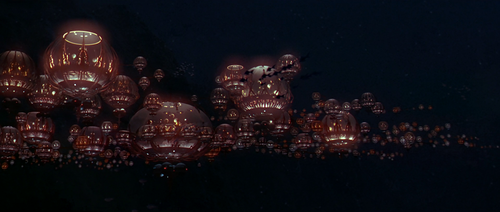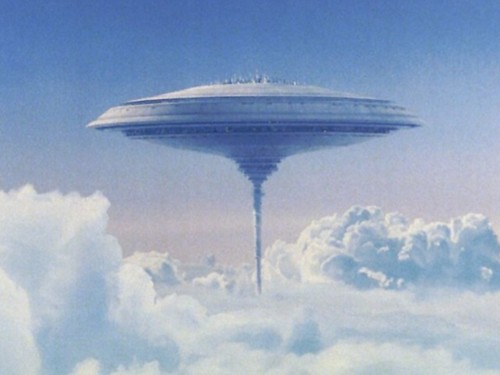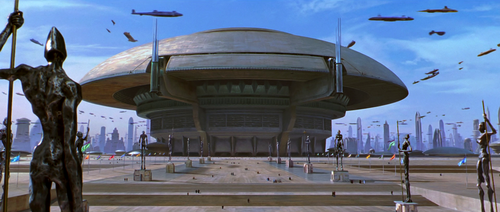5 amazing cities from the Star Wars universe
May the Fourth be with you! In honor of unofficial Star Wars Day, May (the) fourth, we're reposting a fun Star Wars-themed post from 2015.
Part of the appeal of the cultural juggernaut that is Star Wars has always been its fantastic settings, including its cities. Here are the five most fascinating cities from the first six live-action Star Wars movies.
5. Theed
The Phantom Menace may have been a disaster of a movie, but its setting at the height of the galaxy’s pre-Empire luxury showed us a strong contender for the most beautiful city in the franchise. Theed is Queen Amidala’s home, and capital of the planet Naboo.
Picturesque Naboo is the Neoclassical Europe of the Star Wars universe. Its ornate buildings and grand, monument-strewn avenues are an idealized version of the Baroque Mediterranean. There’s no visible traffic or industry, besides one spaceport at the bottom of a waterfall. Theed’s citizens appear to do nothing but shop and picnic.
It’s the Garden of Eden of the Star Wars universe. Perfect and naive, and out of place once the galaxy descends into evil and civil war.
4. Mos Eisley
The complete opposite of Theed, Mos Eisley is a frontier settlement on a poor and dirty planet, a wretched hive of scum and villainy. If Theed is Habsburg Vienna, Mos Eisley is Dodge City. Its famous cantina nothing so much as a wild west saloon.
There’s precious little art of culture in Mos Eisley. Its hardscrabble populous struggles to survive, and its streets are full of pack animals, cargo crates, and industrial equipment.
3. Gungan City
Return to Naboo for the secret underwater Gungan City. It’s beautiful, but like all things Gungan, it makes little sense.
With a fairly small number of orbs that appear to be mostly empty air, Gungan City is clearly more of a village than a metropolis. Maybe the Gungans prefer isolation, or maybe they’re too clumsy to live many side-by-side. Hopefully we’re never forced to sit through more Gungan scenes, and therefore never find out.
One would think that if Gungans are such great swimmers that they’re happy to build underwater cities, they’d spread their city vertically as much as sideways. Guess not.
2. Cloud City
High-concept sci-fi at its best, Cloud City is an atmosphere-mining colony on a gas giant planet with no solid surface.
Its workers harvest gases for use in Star Wars’ futuristic technologies, and its government is more corporate CEO than democratic president.
Being an expensive floating factory, Cloud City’s layout and infrastructure are necessarily vastly different from a cobbled-together frontier town like Mos Eisley. As a single, purpose-designed mega-structure, Cloud City needs nothing so messy as parking lots, and piecemeal expansions are strictly not happening.
And if you approach it without an invitation, cloud cars shoot at you. It’s the ultimate gated community.
1. Coruscant

One city that covers a whole planet. Coruscant is either the ultimate in sprawl, or the ultimate in extreme urbanization. Given what we’ve seen on-screen, it seems to be the latter.
Like Washington, the capital of the Star Wars galaxy clearly has a height limit, with a canopy of blocky same-height buildings rolling over the landscape, and monuments like the Jedi Temple (above) dominating the skyline. But unlike DC, Coruscant’s city planners allow frequent skyscrapers to pierce the blocky canopy.
Unlike other Star Wars cities, Coruscant features busy air-highways, crowded with flying transports. But there don’t seem to be enough vehicles to move around a population as dense as Coruscant’s must be. Surely the planet is a public transit paradise.
This post was written before The Force Awakens, Rogue One, and The Last Jedi came out. Are there cities from those films which caught your eye?





